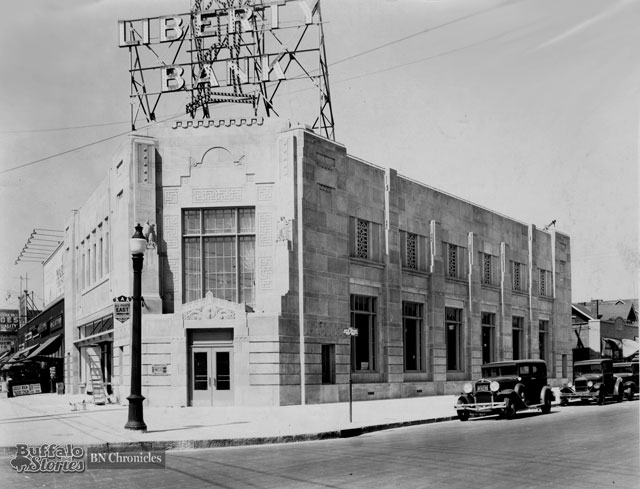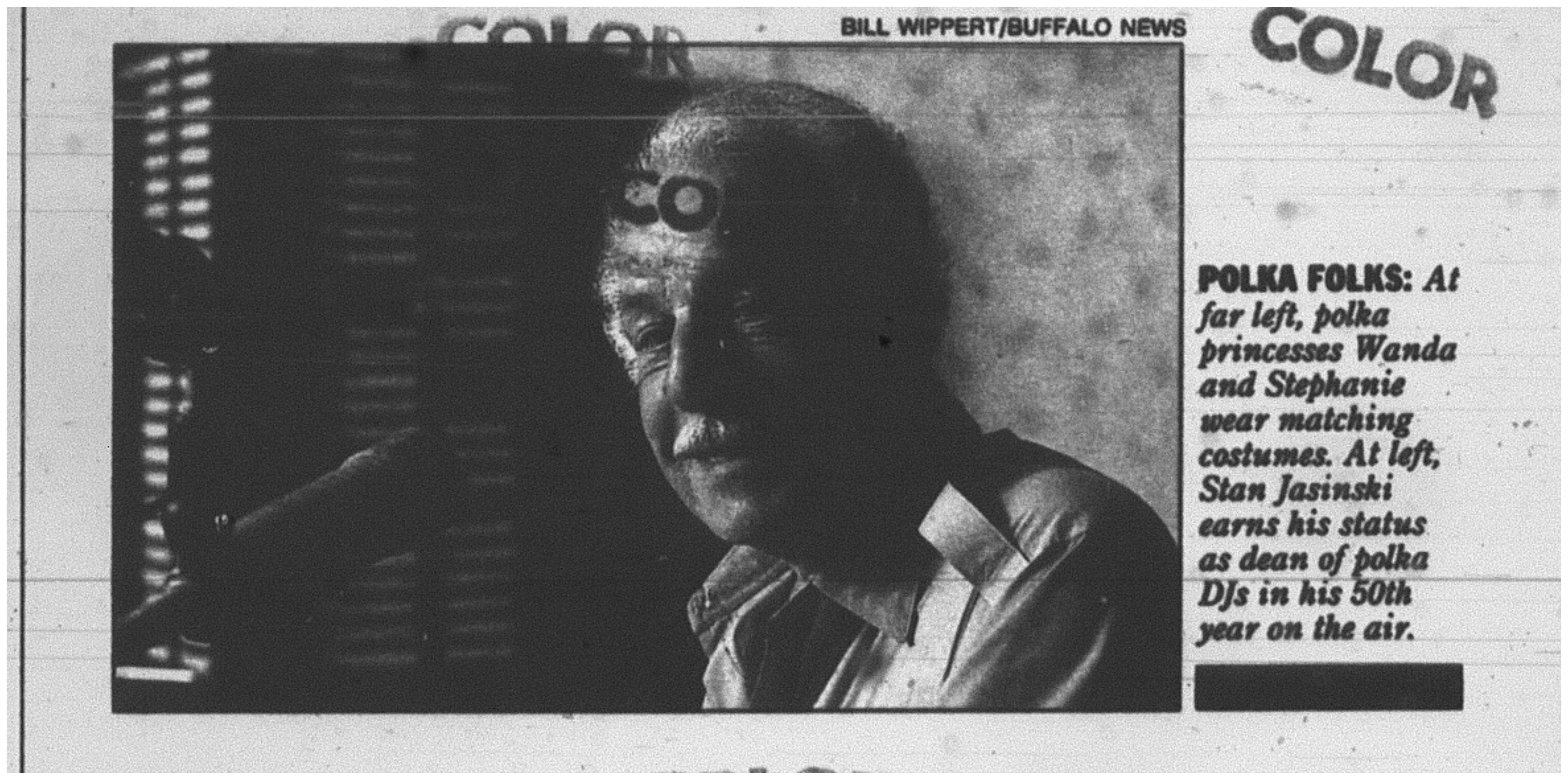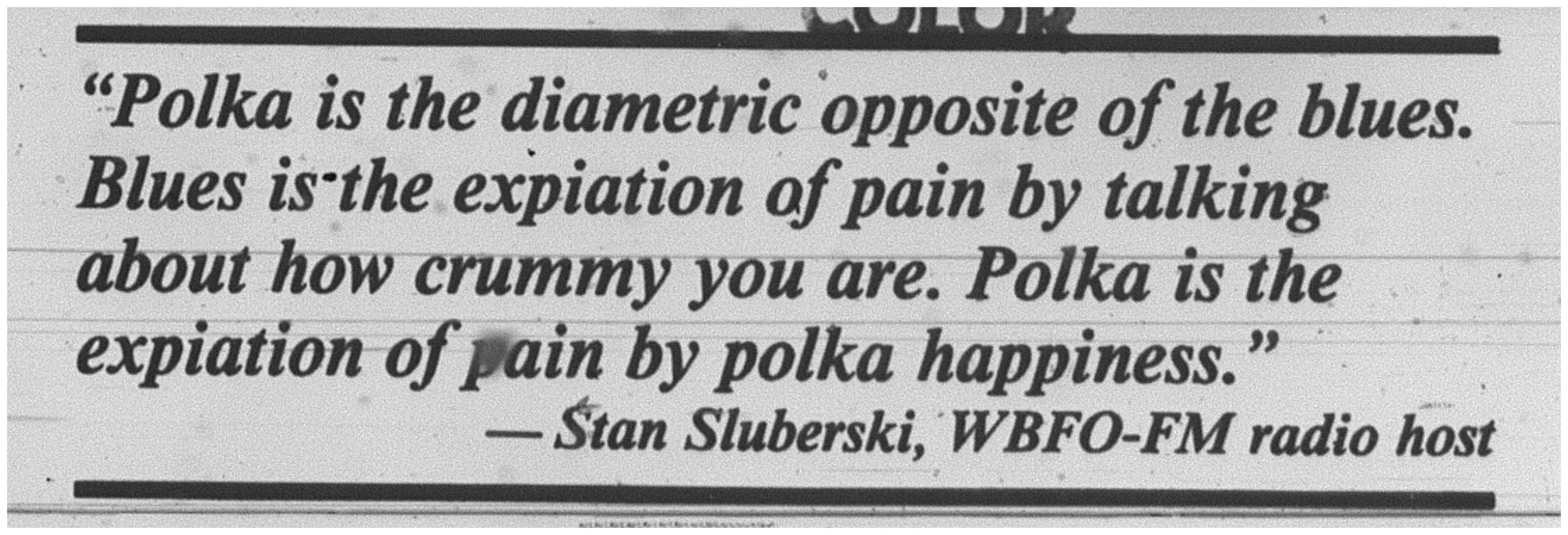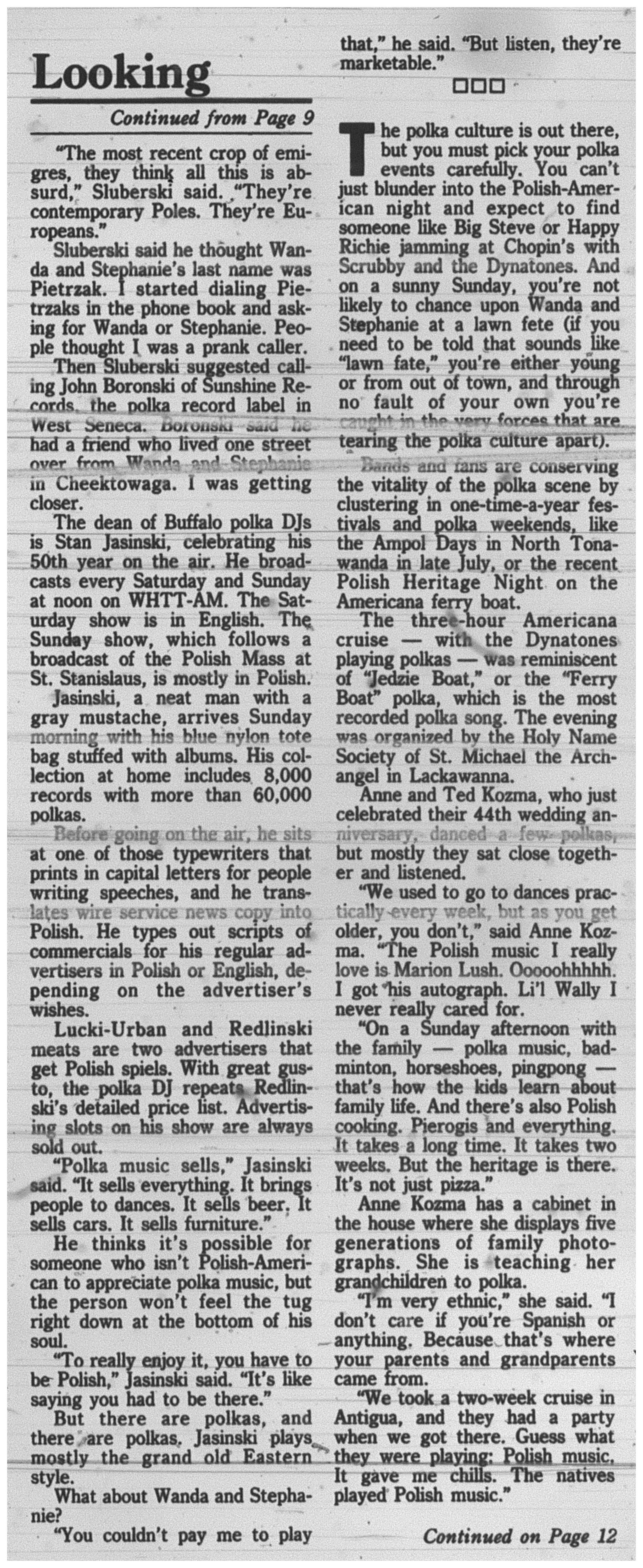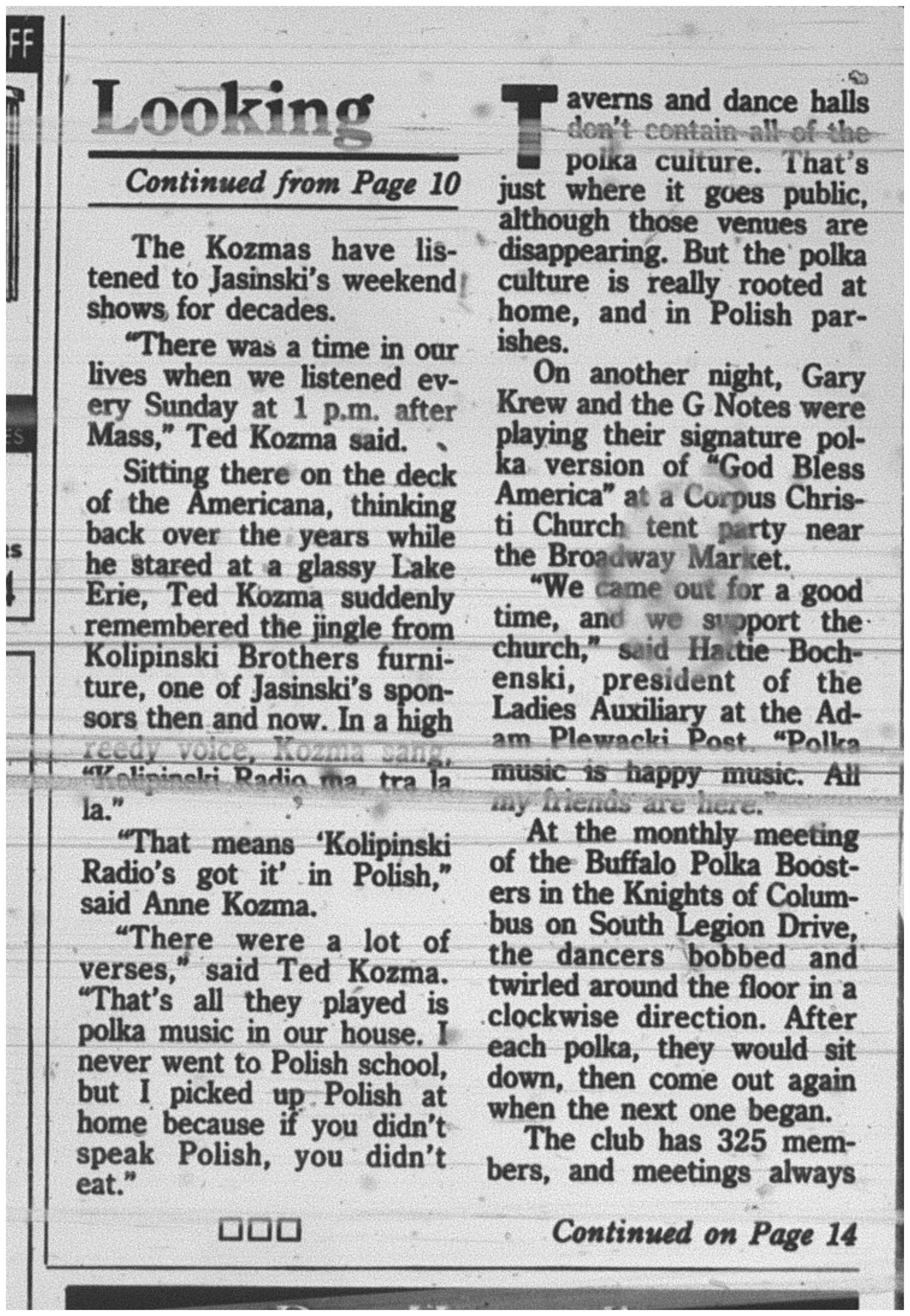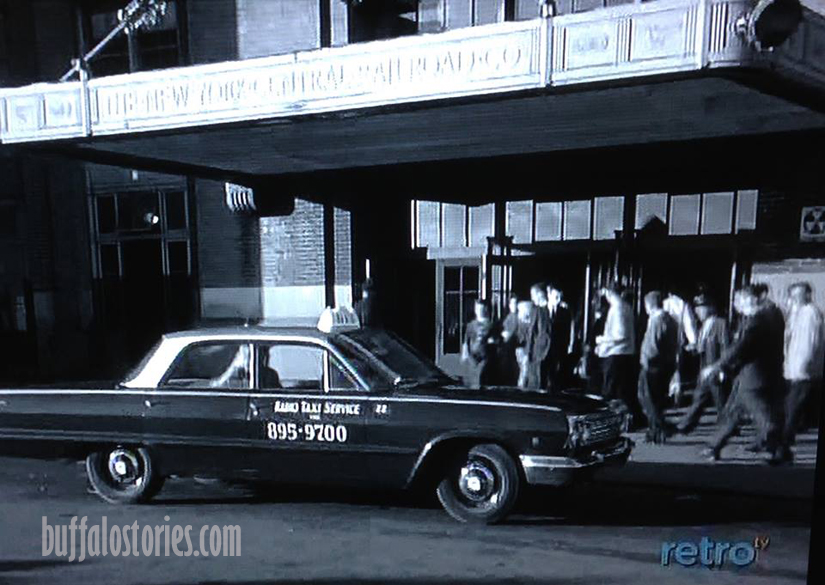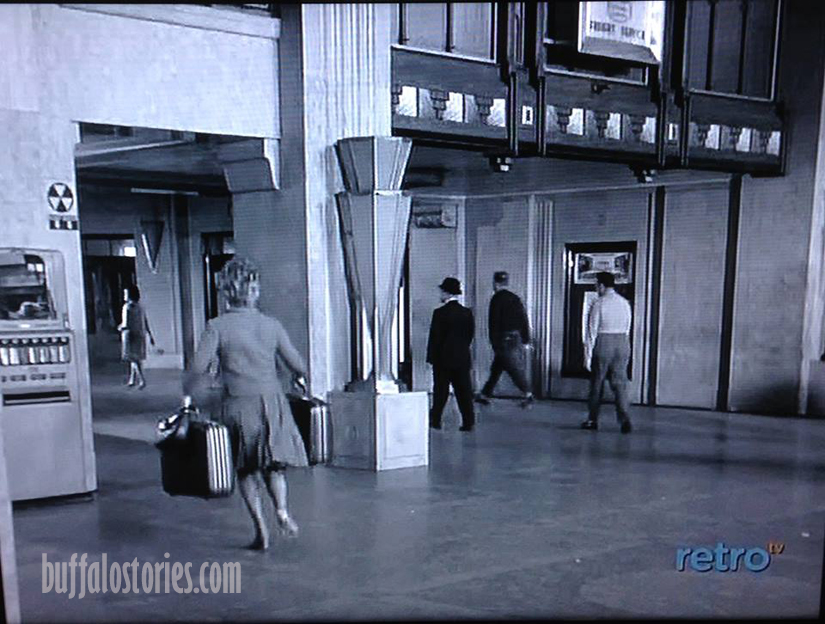 By Steve Cichon
By Steve Cichon
steve@buffalostories.com
@stevebuffalo
In the coming years, the State of New York will spend $30 million to downgrade the Scajaquada Expressway and another $6 million to study the idea of covering the Kensington Expressway from Best Street to Ferry Street.
When visiting Buffalo to discuss highlights of the 2016-17 budget, Gov. Andrew M. Cuomo was met with cheers, oohs and aahs as he announced the work on the 33 and the 198, calling the ruining of Frederick Law Olmsted’s designs “a mistake.”
“It was originally the Humboldt Parkway,” said Cuomo of the Kensington Expressway, “it was beautiful, and it was part of the Olmsted design. In the mid-’50s, we had a better idea, and it turned out not to be a better idea, which was to move vehicles in and out of Buffalo faster by building a highway.”
While it makes for great speeches, it’s difficult to boil the agonizing, slow, 25-year Humboldt Parkway destruction process and community debate into a single sentence, let alone just the word “mistake.”

The 1962 headline that ran with this photo reads, “The Kensington expressway cuts through the heart of the city.” (Buffalo News archives)
In much the same way that the debate over what should happen next with the Scajaquada and Kensington Expressways will likely rage for years, it was nearly a quarter-century of study, redesign, promises, running out of money, redesign and finding more money before Buffalo’s Kensington and Scajaquada expressways left the Humboldt Parkway a memory.
A political hot potato
From the time the expressways were proposed in 1946 to when the Kensington was finally completed in 1971, they were more than roads. The Kensington Expressway, especially, was one of those public works projects that seemed to take on a life of its own. Through 25 years, “the 33” was a political hot potato, a metaphor for Buffalo’s forward thinking and a metaphor for Buffalo’s inability to ever get anything done, something some people wanted and something some people hated all at the same time.
The building of the highway, especially in light of what was lost to build it, is almost universally considered a mistake. But how did we get here? What was that better idea Cuomo talked about? How were these scorched-earth highways allowed to happen?
It wasn’t, as is often portrayed, just a matter of wanting to transport people from downtown to suburbia “as quickly as possible.”

Map of the arterial highway system planned for Buffalo by the State Department of Transportation in 1946.
The state created the first plan for a series of arterial highways crisscrossing Buffalo in 1946. The idea was to connect all parts of the city with the Niagara and Ontario Thruways, which were already in the pipeline.
Most of these ideas died on the drawing board, but that 1946 plan set the wheels in motion for the Scajaquada and Kensington projects. None of these ideas was taken lightly — they were introduced as marvels of modern engineering that would be needed for the 300,000 cars that were expected to be filling Erie County’s roads by 1960.
That number was passed in 1953. In the same breath that engineers were still calling the proposed highway system “futuristic,” they were also saying that if these roads weren’t finished quickly, they’d very likely be outdated before they were completed.
Planners thought that, if the number of cars in Erie County grew from 218,000 in 1946 to 368,000 in 1957, then the number could approach 625,000 in 1967. (The 2015 number, by the way, is 695,000.)
Traffic was increasing at an exponential rate. More and more cars were moving without guidance or planning through streets that were, in the words of one disgusted motorist, designed and “built for the horse and buggy.”
“The future of Buffalo’s residential areas is at stake today,” said Buffalo Planning Commission Director H. Dale Bossert, in outlining why Buffalo needed these new highways. “Heavy volumes of traffic are spilling over into formerly quiet neighborhood streets. A child on his way to school no longer travels along a quiet street but a trafficway rushing with cars and trucks.”

In the late 1940s, the Main Street and Humboldt Parkway intersection, shortly before the destruction of the parkway connecting Delaware and Humboldt (now Martin Luther King) parks began, as the Humboldt portion of the intersection was sunken below grade to speed traffic through. (Buffalo News archives)
The roots of the Kensington Expressway were included in the 1946 plan as five separate highways, all meant to alleviate the traffic flowing through nearly every city neighborhood, combining into a single super highway providing a straight shot from downtown to the airport.
In 1951, the new Main/Humboldt underpass was already being created to help ease the congestion and traffic flow on city streets. The Scajaquada Parkway Expressway was meant to start at Delaware Avenue and run to the new Ontario Thruway (I-190.) Humboldt Parkway was being extended from Agassiz Circle to Delaware Avenue through the park, connecting the new expressway with the expedited traffic coming through the Main/Humboldt interchange.

When it appeared in The News in 1951, the title of this photo was, simply, “Progress!” This marked the beginning of the piece-by-piece loss of Humboldt Parkway. Months earlier, the construction area was filled with two lines of trees and a bridal path. (Buffalo News archives)
A 1953 brochure outlining state plans for the highway were derided as “an over-enthusiastic engineer’s dream,” especially with the additional intersection in the middle with the Scajaquada Parkway expressway. The Kensington, the Scajaquada and the widening of Delaware Avenue from the park to Kenmore were thought to be enough to create better moving traffic around the north, east and west parts of the city.
It was clear that most Buffalonians and Western New Yorkers wanted to see the expressway built — though many had reservations. Some didn’t think it was physically possible; others just thought it was too big and too expense and that it seemed implausible that all the state, county and city forces that needed to come together would actually do so.
While there was protest of the building of the expressways — particularly from those who stood to lose their homes, businesses and neighborhoods — far more complaints came from those upset over perceived dragging of feet on a project that was seen by editorial staffs at both The News and the Courier-Express as important to the future of the city and the region.
“Modern highway access to Buffalo’s modernized airport will be assured,” said planner Bossert. “In addition to these advantages for normal traffic, the Kensington Expressway offers an unparalleled opportunity for Civil Defense evacuation and assistance. Planning for dispersal from the northern part of Buffalo reveals the extreme urgency of this project.”
Yes, Cold War-era Civil Defense preparedness was one of the reasons in favor of the Kensington. The need was there, said Major General Edwin Zeigler, Erie County’s Director of Civil Defense, to move people out of the city quickly in the event of an enemy attack.
At one public hearing, he testified that a June 1954 mock test showed that under then-established escape routes, about 230,000 Buffalonians would have died in an attack. With a good dispersal plan along high-speed highways, the number of dead in a potential attack could be dropped as low as 49,000.

In the 1950s, Buffalo was lagging behind other metropolitan areas in New York State and big cities across the country in terms of having a system of arterial highways with good traffic patterns to encourage the better flow of people in and out of the city.
Nearly eight years after it was proposed, the city and state weren’t even close to agreeing to how to start the Kensington project, although most seemed to agree something needed to be done. “You can only put so many fish in a bowl,” Buffalo Mayor Steven Pankow said in 1954, in urging agreement on the Kensington.
As more cars clogged the streets and Buffalo faced losing state and federal funding for road and highway building, years of inaction, more than possible destruction, were on the minds of civic leaders.
Newspaper editorial department writers opined “prompt action on Kensington Expressway plan is necessary.” The Chamber of Commerce hoped that “any objections to letting the State start right away with construction can be resolved quickly in the best interests of Buffalo as a whole.”
It was envisioned that the Kensington Expressway would carry more traffic than all of the city’s radial streets combined, and would fix the traffic problems that had been plaguing the city for decades.
“This important project would be a major step forward in alleviating the traffic blight that has diseased our neighborhood communities,” said City Plannning Director Russell Tryon in 1954.
He further went on to say that he thought the construction of the expressway might help keep people in the city, rather than literally drive them to suburbia. “If we make Buffalo a better place in which to live, the people will stay and not move out.”
Tryon added, “Unless something is done to alleviate the traffic blight in the neighborhood communities, the situation will grow so much worse that it won’t worth living in Buffalo anymore.”
‘Let’s not study anymore. Let’s move.’
The Chamber of Commerce’s executive director, Charles Fichtner, called the Kensington a “golden opportunity” and said letting the opportunity to build it with outside money slide would be “a little short of civic treason,” adding that Buffalo is at “threshold of great and unlimited future progress. This is no time to make little plans. This is no time to think in small terms. We should want to do big things and think big things.”

Sisters Hospital, top left, Delaware Park and the Scajaquada Expressway, Thursday, July 10, 2014. (Derek Gee/Buffalo News)
“Let’s not study anymore,” he pleaded. “Let’s move.”
By 1954, when it became clear that neighborhoods in the Fruit Belt and along Humboldt Parkway would be the first targeted by the wrecker’s ball, many people who had lived there for generations spoke out — but their voices were marginalized by planners and the press.
A brief article about a community meeting on the project said that of about 200 people there, most of whom were slated to lose their homes, there was “an angry minority of homeowners in the Kensington section” who were looking to stand in the way of progress.
One homeowner argued that it wasn’t fair for the city and state to remove them from homes which they’ve occupied for years, contending it would impose a tremendous hardship on elderly people who didn’t follow the younger generation into the suburbs. Still others expressed the fear that the expressway, when completed, would encourage more Buffalonians to move out of the city because it would provide them with a high-speed route to their work in the city. A few contended the expressway would form another “barrier” dividing the Kensington section into two distinct parts.
State Public Works Engineer William Gallancy compared the building of the Expressway to a major surgical procedure: “Painful, but necessary for survival.”
Some questioned that notion. In a letter to the editor signed WHY, a Kensington area resident opines, “Our traffic situation is serious, but surely, with all the top engineers of the country to consult, a better plan could be devised. Why put a speedway through the middle of a heavy populated area? Will there be a ‘pedestrian under-pass at each street, or will people have to walk blocks to get across the highway? What’s wrong with a subway or an elevated, along one of our wider streets? Let’s fix the streets we already have.”
“Kensington area residents are definitely opposed to the Expressway as presently planned,” said Councilman at Large Peter Frey — one of the few city leaders to take up the plight of those who’d lose their homes to the Kensington. “They are willing and ready for any traffic relief, providing it does not blight the area and cause them to lose their homes, which represent their life savings. They do not feel that they ‘should have to suffer the consequences’ to bring suburbanites into downtown Buffalo. I agree with them in this respect.”
Years of feet-dragging end
By early 1957, the state was getting ready to displace 600 families from their homes to begin construction. Any family displaced by the expressway was given priority in in the newly built Kensington Heights public housing project on Fillmore Avenue, but it wasn’t always as orderly as moving from the path of the expressway to a nice new apartment.

Progress of the building of the first leg of the Kensington Expressway in 1959. The Museum of Science is to the right. (Buffalo News archives)
One “battling grandma” made the front page of the paper, after sending Gov. Averill Harriman a letter denouncing the state’s “dillydallying” on the Kensington project. Mrs. Edmund Jakubiak owned a building in the path of the expressway that the state promised to buy, so all her tenants left, and she herself bought a new place on the promise of a forthcoming state check. When no check appeared, the state’s “shenanigans” left her owing money and having to apply for a loan for her new home.
Jakubiak became a minor folk hero around her soon-to-be-demolished Best Street neighborhood, as she made sure every penny owed her was paid in full.
She wasn’t the only one to leave before the state was ready to begin construction, and those who left their not-long-for-this world homes and businesses left them vacant — and open to criminals. “Lawless elements,” it was claimed, “are congregating and endangering lives and property in and around houses taken over by the state” for the Kensington Expressway.
Homes are dismantled
On Dec. 16, 1957, the dismantling of homes and businesses along Cherry and Peach streets began, with demolition starting in January 1958 — 12 years after the project was announced. Many applauded this development, as the first section of land for the highway, from Michigan and Cherry to Humboldt and Landon, was cleared by August 1958.
Many of those who weren’t slated to lose their homes ended up losing the aesthetic of their communities, especially those living along Humboldt Parkway.
Buffalo School teacher Cornelia Metz lived at 936 Humboldt and wrote about her worst fears in a letter to the editor.
“It is not generally known that the beautiful trees on Humboldt Parkway will fall victim to ‘progress’ when the Kensington Expressway is constructed. Only a complete materialist could ride the mile-and-a-half of this street without being thrilled by its beauty.
“Must those who are in a hurry to go to their suburban homes be given more consideration than those who live in and pay taxes in the city? Granted that something must be done to expedite traffic, but must that be at the expense of our trees?”
Entreaties like Metz’s were met with a tone bordering on mocking by city developer Russell Tryon, who wrote about problems in building the expressway in the Courier-Express. “One opponent devoted considerable time to the harm which would be done to Humboldt Parkway by the proposed improvement, such as increased traffic and the loss of lovely trees on one of the city’s most attractive parkways. Answer — unfortunately, except for the trees in the Center Mall, the esthetic qualities of the parkway already have been largely destroyed by heavy traffic.”
Shortly thereafter, the tree-lined median in front of Metz’s home was replaced with a high-speed expressway.
That was 1958. The stretch of the Kensington between the Scajaquada Expressway and the Buffalo Airport was built over the next decade.

Above: a 1938 airborne view with UB’s South Campus in the foreground and Bailey Avenue to the left and Kensington High School to the upper left. Below: A 1966 airborne image shows Kensington High School and Bailey Avenue as the expressway is being built.

In 1968, when the original plans were completed and downtown Buffalo was connected to the Buffalo airport, a problem remained: As engineers had predicted as early as the 1940s, the expressways could still be obsolete by the time they were finished.
This caused one last flurry of road building and the final trees of Olmsted’s Humboldt Parkway to be felled.
Expressway sinks into place
The “Hourglass” portion of the Kensington moved traffic off the subterranean blown-out expressway onto Humboldt Parkway. Traffic clogged going toward downtown in the afternoon and toward Cheektowaga in the morning. Twenty years of planning and building, and the road still didn’t alleviate traffic. Worse yet, that small stretch saw the most accidents — and the most fatal accidents — than anywhere else along the highway.
The Courier-Express noticed the dwindling number of trees. “One of the most impressive archways of trees in Buffalo is rapidly disappearing to the tune of rasping power saws along the ‘bottleneck’ section of the Kensington Expressway. The biting teeth of the saws undo in minutes what it took 90 years for nature to accomplish. Many of the 300 trees that are to be felled are stately elms that were planted by the city around 1880,” was written in July 1968, “but then motorists snagged in rush-hour traffic jams in the section, less than one mile between East Delavan Avenue and Northampton Street, might be soothed by trees in summer green.”
By the end of 1968, the trees were gone. Thousands of tons of rock and earth were moved to sink the final grade-level portion of the expressway.

The hourglass portion of the Kensington Expressway, nearing completion, in 1970. (Buffalo News archives)
So, mistake? Sure. But a bit more complicated than that.
 By Steve Cichon
By Steve Cichon














